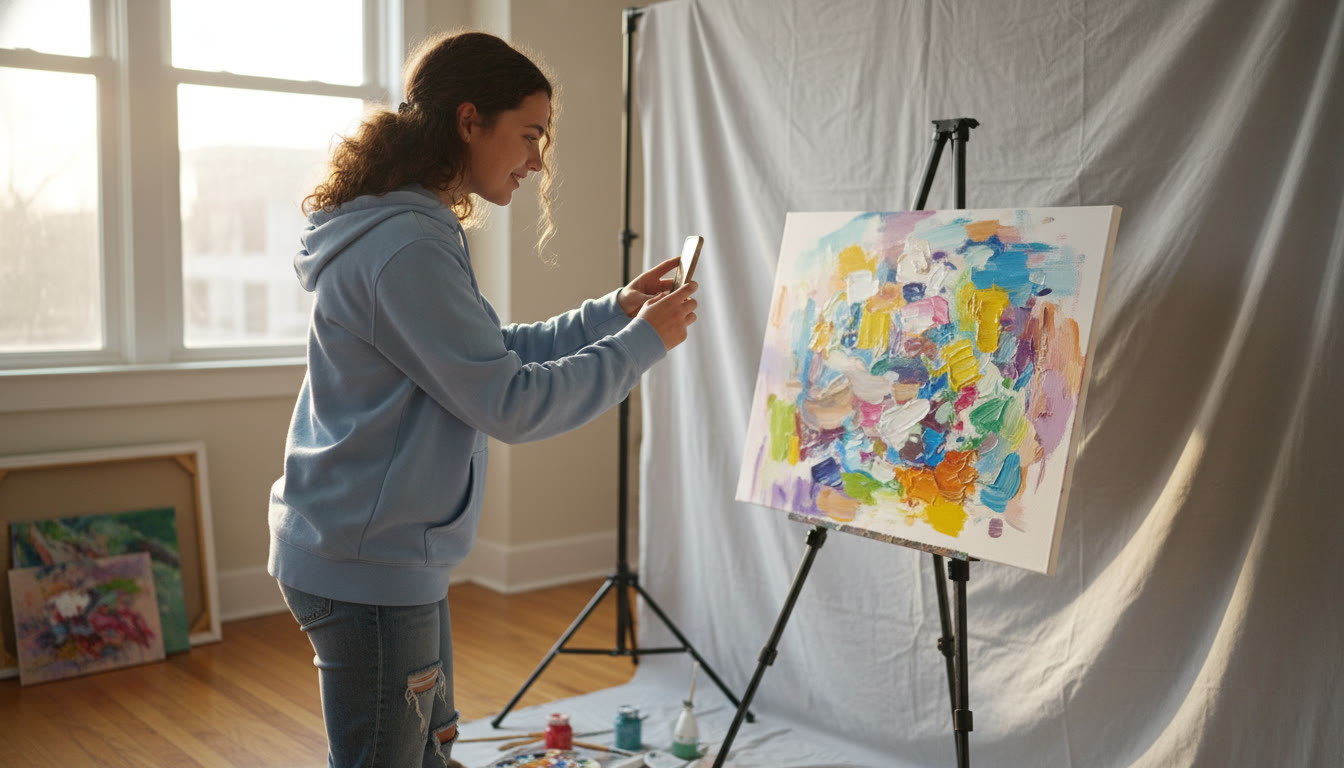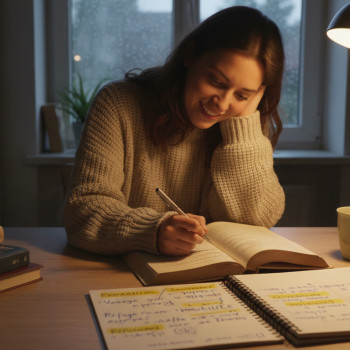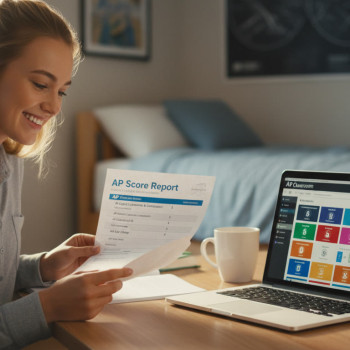Why this matters: the one deadline that ties it all together
Take a deep breath. If your child is finishing an AP Art & Design portfolio, you’re in one of those uniquely stressful — and exciting — corners of parenting: the intersection of creativity and deadline management. The College Board requires that students submit three portfolio components (Sustained Investigation Images, Sustained Investigation Written Evidence, and Selected Works) in the AP Digital Portfolio by the AP Program deadline in May. That deadline is the non-negotiable moment when everything your student has developed over months is sent off to be scored, so it’s the anchor around which teachers set earlier school deadlines.

Top-line checklist for parents (what to know right now)
Before we dig into the how-to mechanics, here are the essentials you should know and confirm with your child and their teacher:
- There are three portfolio components to submit: Sustained Investigation Images (15 images), Sustained Investigation Written Evidence (responses to prompts), and Selected Works (images of 5 works — 5 images for 2-D and Drawing; 10 images for 3-D where two views per work are required).
- All components must be submitted as final in the AP Digital Portfolio by the AP Program deadline in May (your school will usually set an earlier internal deadline to allow teacher review).
- Students can upload and revise images up until they select “Submit Final” for each component — once submitted, changes are only possible if a teacher returns a component for revision through the system.
- Your school’s AP coordinator must have ordered an exam for the student for the portfolio to be sent for scoring. In short: uploading = necessary, but exam order = also required.
Timeline and practical planning
Creativity doesn’t like rushed deadlines, but portfolios must meet administrative deadlines. Work backward from the AP Program deadline to build a calm timeline that includes time buffers for photography, edits, teacher feedback, and tech glitches.
Suggested timeline (example for a May deadline)
This is a parent-friendly schedule you can adapt depending on your school calendar and your child’s pace.
- January–February: Focus on sustained investigation themes. Encourage sustained sketching, research notes, and documenting development with dated images.
- March: Begin high-quality photography/scanning of pieces. Draft written evidence answers. Have a mid-month check-in with the teacher.
- Early April: Complete and finalize any works you want included. Start uploading early drafts to the AP Digital Portfolio so your child gets comfortable with the system.
- Late April: Teacher review window — most schools require internal submission now so teachers can check for academic integrity and completeness.
- Early May: Final edits, confirm exam order with AP coordinator, and ensure all three components are ready to submit as final.
- Deadline Day in May: Submit as final well before the cut-off time. Aim to finish at least 48 hours ahead of the AP Program deadline to avoid last-minute site congestion.
Technical how-to: photographing, formatting, and uploading
Digital submissions are exacting, but not mysterious. If you or your student can follow a few standards, the upload will go smoothly.
Photography & scanning basics
- Use natural, even light whenever possible — morning or late afternoon light diffused through a curtain works nicely.
- Avoid direct flash and severe reflections. For 3-D works, multiple angles are essential.
- Capture an image with a neutral background and include a ruler or a small object for scale if dimensions are hard to infer.
- Export files at high enough resolution to show detail, but adhere to file size limits of the AP Digital Portfolio (compress judiciously if necessary).
File naming and metadata
Consistent file names help when arranging images: include the student name or initials, piece title, and a sequence number (for example: JSmith_SI_01_Title.jpg). Encourage your child to keep a simple spreadsheet tracking uploaded files, dimensions, materials, and upload dates — it’s gold when finalizing the Written Evidence section.
A table to keep the portfolio components straight
| Component | What to Submit | Image Count | Notes |
|---|---|---|---|
| Sustained Investigation Images | Images that document the development of an investigation over time | 15 images | Include works-in-progress, studies, and final pieces that demonstrate conceptual development |
| Sustained Investigation Written Evidence | Written responses to specified prompts about the investigation | Text fields (not image) | Requires reflection, references to sources, and clear explanation of process and growth |
| Selected Works | Images of final works that showcase technical skill | 5 works (5 images for 2-D/Drawing; 10 images for 3-D) | Choose pieces that are strongest and varied in technique or concept |
Helping with the Written Evidence (without doing it for them)
Parents can play a hugely supportive role in shaping reflections without crossing the line into authorship. The Written Evidence needs to clearly explain the student’s investigation, influences, decision-making, and growth.
How to coach, gently
- Ask questions that tease out specifics: “What problem were you trying to solve?” “Which experiments failed, and what did you learn?”
- Encourage concrete language. Instead of vague praise, suggest specifics: color decisions, material choices, or a pivotal critique that shifted the project.
- Help them organize drafts, but let the voice be theirs. Teachers can detect an adult voice; authenticity matters.
Common pitfalls and how to avoid them
Even conscientious students can stumble on technical or administrative issues. Here are the usual suspects and how to prevent them.
- Leaving uploads to the last minute. Solution: submit early drafts and re-upload improvements as needed.
- Missing the exam order step. Solution: confirm with the AP coordinator that an exam order has been placed.
- Unclear photo scale or poor lighting. Solution: test shots and simple lighting setups at home; many schools allow students to make time in the art room for photography.
- Inadvertent personal info in images. Solution: crop photos so that student faces or other identifying details are removed unless required.
Teacher and AP coordinator roles — and why parent communication matters
Your child’s teacher and the school’s AP coordinator are the administrative backbone of the portfolio submission process. Teachers review for academic integrity and artistic authenticity; coordinators place the exam orders that allow the portfolio to be scored.
Questions to ask the teacher or coordinator
- What is the school’s internal deadline to submit materials for review?
- Has the exam been ordered for my child?
- Are there school resources (scanners, studio time) scheduled for students who need them?
- What’s the preferred method to notify the teacher if technical issues arise during upload?
When technology acts up: troubleshooting checklist
Digital platforms can be imperfect. If your child hits a snag, try these steps in order:
- Check internet connection and try another browser or device.
- Confirm file format and size meet the platform’s requirements; compress images gently if needed.
- Log out and log back into the AP Digital Portfolio; sometimes sessions timeout or cookies interfere.
- If a teacher returns a component, follow their directions and resubmit before the deadline.
- Document errors (screenshots, timestamps) and communicate them to the teacher or AP coordinator right away — documentation can be important in rare technical error cases.
How to evaluate which works to include
Selection is both an art and a strategy. The portfolio should reveal progression, risk-taking, and conceptual depth. Help your child avoid choosing pieces solely because they’re finished; instead, prioritize work that tells a story of development.
Selection criteria
- Variety: Show different techniques, subject matter, or contexts where appropriate.
- Progression: Include images that demonstrate idea development and revision.
- Quality over quantity: The Selected Works should be the strongest representative pieces.
- Relevance: Each image should contribute to the narrative of their Sustained Investigation or demonstrate core skills.
Real-world context: what colleges see and why the portfolio matters
Art schools and college admissions officers look for evidence of sustained effort, creative thinking, and technical skill. A well-structured portfolio can illuminate a student’s intellectual curiosity and work ethic. The portfolio isn’t just an art show; it’s a document of a student’s development, resilience, and ability to articulate ideas.
How Sparkl’s personalized tutoring can help (naturally)
For students who want targeted support, Sparkl’s personalized tutoring can be a practical supplement. Sparkl offers 1-on-1 guidance, tailored study plans, and expert tutors who can help students refine their written evidence, strategize portfolio selection, and prepare professional-quality images. Their AI-driven insights can highlight organizational gaps and suggest areas to strengthen — all while preserving the student’s authentic voice and creative ownership.
Examples and mini-case studies
Seeing examples helps make abstract advice concrete. Here are three short, fictionalized scenarios based on common real-world situations to illustrate how families and students manage the process.
Case A: The organized planner
Leah started photographing her work in March, maintained a simple spreadsheet of image filenames and descriptions, and submitted drafts to her teacher in April. She used teacher feedback to swap out two images and clarified her written responses. Result: final submission with a cohesive narrative and no technical hiccups.
Case B: The last-minute rescue
Marcus panicked two days before the school’s internal deadline when scans looked washed out. He and his mom set up a quick home studio with diffused window light and retook all images in an afternoon; Marcus used Sparkl’s tutoring session to tighten his written evidence and manage the resubmission. They finished with time to spare.
Case C: The technical glitch
Sophia submitted everything but an image was returned by the teacher for clarity. She made the recommended changes, resubmitted promptly, and recorded the return/resubmit timestamps in a log so she could show she met the AP Program deadline. Clear communication with her coordinator about exam order ensured the portfolio was scored.
Parent conversation scripts — what to say (and what to avoid)
Sometimes the difference between support and pressure is phrasing. Here are a few short scripts to guide supportive conversations:
- Instead of: “Hurry up and finish or you’ll miss the deadline.” Try: “How can I help you plan the next week so you’re not rushed before the deadline?”
- Instead of: “This looks great but change these parts for sure.” Try: “Which pieces tell the story you want to show? Want me to help photograph any of them?”
- Instead of editing written responses yourself: Ask clarifying questions and offer to proofread for grammar, not content.
Final pre-submission checklist for parents and students
Use this checklist together at least 72 hours before the AP Program deadline to avoid last-minute stress:
- Confirm teacher has reviewed internally and hasn’t returned components.
- Verify AP coordinator has placed the exam order for your student.
- Ensure all three components show a black checkmark indicating they have been submitted as final (after your student selects Submit Final) — confirm this on the Class Summary Overview page.
- Double-check file names, dimensions, and written evidence completeness.
- Keep screenshots or a simple log of submission times in case of technical issues.

After submission: what to expect
Once everything is submitted as final and the exam order is placed, the portfolio is sent to be scored. There’s typically a waiting period before scores are released. Encourage your child to celebrate the milestone — regardless of the outcome, they’ve completed a substantial, creative endeavor.
Wrapping up: a calm, celebratory approach
Helping your child through AP Art & Design portfolio submission is an opportunity to teach project management, resilience, and creative integrity. Your steady presence — checking logistics, offering a quiet place to photograph work, and helping them meet practical deadlines — often matters more than giving creative direction. If you want additional, focused help — for example, polishing written evidence or practicing portfolio organization — consider short, targeted sessions with a tutor. Sparkl’s personalized tutoring can plug into that need with 1-on-1 guidance and targeted plans that respect your child’s voice.
Quick resources and parting reminders
Keep these last points in mind as the deadline approaches:
- Start uploads early; don’t wait until the last night.
- Document every submission step with time-stamped screenshots or a simple log.
- Maintain the student’s authentic voice in written evidence — originality matters.
- Coordinate with teachers and the AP coordinator; administrative steps (like ordering the exam) are as essential as the creative work.
Show up as a calm ally. Stay curious, ask questions, and celebrate the creative work your child has produced. The portfolio is more than a deadline — it’s a resume of artistry and growth. You’ve got this, and so does your student.
























No Comments
Leave a comment Cancel